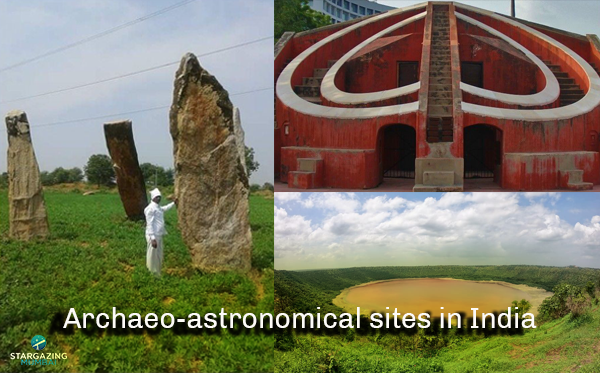Astronomy Events In April 2024 mark the beginning of a season of transformation. Astronomy Events take center stage as the days lengthen and a vibrant green reclaims the landscape, the night sky too undergoes a subtle shift. The familiar constellations of winter begin to fade, replaced by the harbingers of spring.
It marks the beginning of the transition from the winter to summer constellations in the Northern Hemisphere, with the iconic Orion constellation gradually bidding farewell to the evening sky, making way for the rising prominence of spring constellations like Leo and Virgo. Arcturus, the brightest star in the northern hemisphere, rises majestically in the east, heralding a new celestial chapter. The majestic Milky Way core rises and becomes more visible for those venturing further out in less light-polluted areas. Best time for the astrophotographers to capture the core part of the Milky Way band.
Join us for the Milky Way special starparty at one of the darkest location in Maharashtra.
Astronomy Events In April 2024 are :
April 6: Conjunction of Moon and Mars
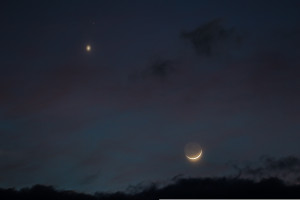
On April 6th, early birds can witness a predawn conjunction of the Moon and Mars. One of the captivating astronomy events of April 2024 Though they won’t be incredibly close, separated by about 1.6°, the thin crescent Moon with a magnitude of -10 and the bright reddish-orange Mars with a magnitude of 1.2 will be visible in the same binocular field of view. Look towards east before sunrise for the best view, ideally from a location with an unobstructed horizon. Stargazing apps can help pinpoint their exact location. A small telescope will give a glimpse of the craters of the Moon and the phases of the planet Mars.
April 6: Conjunction of Moon and Saturn
On April 6 skywatchers can witness another beautiful conjunction of the Moon and Saturn in the constellation Aquarius. While not close enough to be seen together in a telescope, they’ll be close enough to appear as neighboring celestial bodies, visible to the naked eye or with binoculars. The Moon will be a thin crescent, while Saturn will shine brightly at a magnitude of 1.1. Through the telescope, you can view the majestic rings of Saturn and its biggest moon Titan.
Bonus: A special lunar occultation, where the Moon passes in front of Saturn, will only be observable from Antarctica.
April 7: Conjunction of Moon and Venus
On April 7 look towards east before sunrise to catch a dazzling conjunction of the Moon and Venus in the constellation Pisces. This means they’ll appear very close together in the sky. While not quite touching, they’ll be close enough to fit in a telescope’s view. Venus, the brighter of the two, will outshine the thin crescent Moon. This phenomenon, however, won’t be visible all night. Because they’re near the Sun, they’ll be low on the horizon and disappear as dawn breaks.
Must-see astronomy events: For skywatchers in North America, an even rarer sight might be happening a lunar occultation! This is where the Moon briefly covers Venus. Be sure to check the eastern sky before the dawn break.
April 8: Total Solar Eclipse
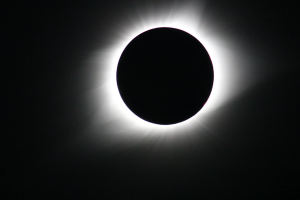
A total solar eclipse, one of the most captivating astronomy events, will occur on April 8th. Unfortunately, the eclipse will not be visible from India. This rare event, where the Moon completely blocks the Sun’s light, will cast a narrow path of totality across parts of North America, including Canada, the United States, and Mexico. However, there’s no need to miss out entirely! You can still experience the wonder of this eclipse virtually. Look for live streams from NASA broadcasting the event. It will allow you to witness the breathtaking sight of the Sun’s corona, its wispy outer atmosphere, which is usually hidden by the Sun’s brilliance.
April 10: Conjunction of Moon and Jupiter
On April 10, astronomy enthusiasts should look up in the early evening twilight for a beautiful conjunction of the Moon and Jupiter in the constellation Aries. The crescent Moon, a mere 4.3% illuminated, will be the fainter of the two. But fear not, Jupiter, the giant planet, will shine brightly at a magnitude of -2.0, making it easily visible to the naked eye. They won’t be close enough to fit in a telescope together, but they’ll be close neighbors, offering a stunning view. Through the telescope, you can view the four brightest moons of Jupiter, i.e. Gynamede, Callisto, Io, and Europa.
April 21-22: Lyrid Meteor Shower
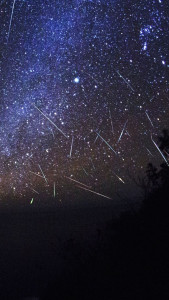
The Lyrid meteor shower, one of the notable astronomy events, peaks on the night of April 21 into the pre-dawn hours of April 22nd. This shower is known for its fast, bright meteors, with rates of up to 15-20 meteors per hour at its peak. Unfortunately, this year the viewing experience might be a bit challenging. The predawn hours when the shower peaks coincide with a full Moon. The bright moonlight will wash out some of the fainter meteors.
However, if you’re patient and keep your eyes peeled, you might still be able to catch some bright dazzling streaks of light across the pre-dawn sky! The best time to look is from a dark location, away from city lights, after midnight, and into the early morning hours. Relax, lie back, and let your eyes adjust to the darkness to maximize your meteor-spotting potential.
April 23: Full Moon
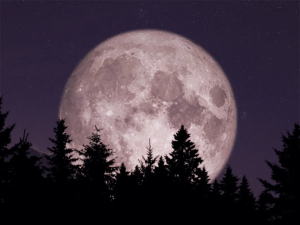
On April 23rd witness the Moon in full glory. The Full moon is also nicknamed as Pink Moon or the Sprouting Grass Moon, signifying the blooming of vibrant pink flowers. Capture the whole surface of the Moon and a good time to understand the lunar topography
Whether it’s through casual observation, scientific participation, or artistic expression, April’s night sky ignites a sense of wonder, featuring captivating astronomy events that inspire awe and curiosity. It’s a time to reconnect with the universe, a vast and awe-inspiring expanse that holds the key to our very origins. As we gaze upwards, we contemplate our place in the grand scheme, fostering a sense of both humility and profound connection with the cosmos.
ENJOYED READING THIS? CONSIDER READING
- Top 6 Places in India with best night sky for stargazing and astrophotography
-
How to spot Milky-Way band in the night sky? Milky Way Galaxy, Milky Way Band, Night Sky
- Spiti Valley: A Paradise For Every Astrophile



